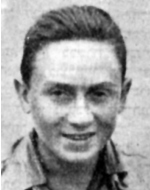Israel, son of Bila and Mordechai, was born on October 15, 1929 in the city of Lodz, Poland. He grew up in his hometown. On the eve of World War II, Poland was the focal point of world Jewry in the fields of religious, national, political, social and cultural activity. There were about three and a quarter million Jews in the country, and in Lodz alone there were some 225,000 Jews, the second largest community after Warsaw. The Jews of Lodz contributed greatly to the development of the city. Apart from the establishment of many industrial enterprises, the city was also an important Jewish cultural center. A network of Jewish schools was built there, great intellectuals worked in it, and intense political and public activity took place among its members. The Germans occupied Poland in September 1939, and immediately afterwards the situation of the Jews in the country worsened. From the beginning of the occupation until March 1940, about 70,000 Jews were expelled from the city. Many of those who left voluntarily fled to the East, to areas controlled by the Soviets. On February 8, 1940, a ghetto was established in Lodz. The ghetto was closed in April 1940 and about 200,000 Jews were crammed into it under inhuman conditions. The Jews of the ghetto were exploited as cheap labor and forced to work in production plants for the Germans. The ghetto soon became a site of mass mortality: overcrowding and poor sanitary conditions caused epidemics, and the population suffered from starvation and starvation. During 1942, about 80,000 people were deported from the ghetto to extermination camps, mainly to Chelmno. The Lodz ghetto, which was the last to be held in Poland, was liquidated in the spring of 1944. For this purpose, the Chelmno extermination camp was reopened, and Jews were deported under the guise of deportations to labor camps in Germany. From August 1944 all the remaining Jews were deported to the Auschwitz death camp. By the end of the war almost all the Jews of Lodz had been murdered. Their fate was the fate of 90 percent of Polish Jewry. Israel was ten years old when he was taken to the ghetto. Until the end of the war, he was tortured by the Nazis, first in the Lodz ghetto and later in Auschwitz, Dachau and other camps in Germany, but survived. Upon his release he turned to look for his family, and when he learned that everyone to the last of them was murdered, he was transferred, like other orphans, to a youth village in Italy. On November 9, 1945, Israel immigrated to Palestine as part of the Youth Aliyah. After about a week in the Atlit camp, he arrived at the agricultural educational institution in Magdiel, where he lived until February 1947. Due to a severe lung disease that he had suffered since the days he was interned in the concentration camps, he found that he was unable to continue his agricultural work. And worked for a while in his profession. At the beginning of the War of Independence, Israel enlisted. He was attached to Battalion 21 in the “Carmeli” Brigade – the Haganah’s No. 2 Brigade. At the beginning of June 1948 he participated in the campaign against Jenin in the face of the Iraqi invasion army that had infiltrated into Israel. From there he was sent with his unit to the western Galilee, to Rosh Hanikra. Ras al-Nakura (Rosh Hanikra), which passed through a historic passage to Lebanon, was a border station and British police controlled by the Arabs since the end of the Mandate. On May 23, 1948, at the end of Operation Son of Ami, the Carmeli fighters took over the place, but the Arabs, from their positions in Lebanon, attacked the border police and captured it two and a half weeks later, on June 11, 1948. On Wednesday, (11.6.1948), the Carmeli fighters reoccupied the police in a difficult battle, and since that time the place remained under Israeli control, and Israel was mortally wounded in the head for a while, apparently recovering from his wound. , Died on November 4, 1948, died at the hospital in Nahariya, Israel was nineteen years old when he died, and was brought to rest in the military cemetery in Nahariya. In order to perpetuate the name of Israel.The space is a “last scion.” The victims of the last scion are survivors of the Holocaust who survived another remnant(Parents, brothers, sisters, sons and daughters), who experienced the Holocaust in the ghettos and / or the concentration and extermination camps and / or in flight and hiding in territories occupied by the Nazis and / or fighting alongside members of the undergrounds or partisans in the Nazi-occupied territories Who immigrated to Israel during or after World War II, wore uniforms and fell in the Israeli army
